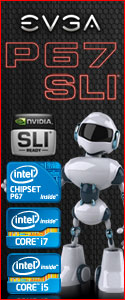The Product
One can recognise that the product is from Noctua, due to its ‘Marmite’ colours and sports the and a standard seven blade fan design. The 4-pin cable is very well protected in the usual (Usual from Noctua) rubberised braid. However at first inspection what is different from the previous incarnations is that there are more ‘rubberised’ vibration pads placed at each corner of the fan.
 |
 |
We can certainly see that the air notches are no longer on the blades as in the P12 range but are now placed upon the fan chassis itself. These are the guide vanes that help to generate sound ‘pulses’ along the framework when one of the fan blades crosses over this section.
 |
 |
 |
 |
At last we come to the motor section. Here we have the covering label showing that this is their second generation design in regards to the motor itself.
 |
Below shows the handy little rubber pads at each corner that are held on by two ‘pins’ This is used when a tight seal is needed to be created between fans with the addition to reducing vibration at this key point within the framework.
 |
 |
Let us now move on to the testing procedure.
Methodology
A range of equipment was used to test in order to give an accurate picture of the fans performance. A temperature controlled environment was used with the ambient being 24.3 Degrees-C. Two sensors were placed before and after the radiator. The former being placed just before the fan (blowing air through the radiator) and a second placed just after in order to monitor temperature changes there. Next two in-line sensors were placed within the loop; the first being placed just before the CPU water block in order to monitor fluid in temperatures, The latter to monitor the heat of the fluid coming out of the water block and into radiator. Finally the CPU temperature was measured by using everyone’s favourite program, Realtemp 3.0!
Testing Equipment
- ABIT X48 Tigerforce
- 4 gigabyte of RAM
- Q6600 cpu
- XSPC RASA
- XSPC RES/PUMP 750 COMBO
- ClearFLex 1/2″ ID Tubing
- XSPC RS 240MM
- Lian-Li temperature Monitor (for before and after radiator air temperatures)
- Tagan BZ Piperock 800w PSU for motherboard/CPU/HDD and fans
- Lamptron FC6
Note that the radiator and pump/res were placed OUTSIDE of the chassis, in order to achieve a more accurate reading. It is to be noted that ALL idle temperatures were taken after one hour of 100 percent CPU load by using Prime 95 and then left to cool down for 30 minutes. For the CPU water block a backing plate was used in order to give the EXACT same pressure; thus surface contact between the CPU and water block, in all the tests.
Fans used on the test SYSTEM:
- Noctua NF-P12
- Xilence Red-Wing
- Alpenfohn Wing Boost
- Coolink RS 120MM
Lastly in order to make everything fair (as the Alpenfohn and the Noctua NF-F12 are actually 1500 RPM instead of 1200RPM) we tested all using the slowest performing fan speed of all comparison products Id-Est: 1200 RPM.
Should any reader find that this setup is familiar, then you would be correct as this was used for the Mayhems Pastel and X1 review
 |
 |
 |
 |
http://www.overclockerstech.com/mayhems-pastel-x1-roundup/
Testing
First up are the radiator air in and out on idle and whilst at full capacity.
 |
 |
As we can see with the above images the differences are not noticeable between then fan range. The less efficient a fan is then in theory the higher the radiator out temperature is due to the water and CPU temperatures.
 |
 |
Now here is where it gets very interesting as on Idle the Noctua NF-F12 is the best performing overall ,with the previous incarnation coming second and the Cool Link model being the least performer. However this is all turned on its head when the full load results are examined and that the Cool Link model is overall the best as there is very little difference between the water in and out. The Alpenfohn fan is also a strong contender with the lowest fluids input of all the fans tests here.
Now let us get to those all important CPU Results:
 |
 |
 |
 |
 |
Note: Please be aware that the product is actually the NF-F12 and not the NF-F14 as stated in the charts.
The charts above show that the Noctua NF-F12 is better within a water cooling environment by significant factor than its nearest competitor, sometimes as much as three degrees! It goes to show that the design of the F12 range really does work in the case of the water cooling segment of the market. However on balance all these products are priced cheaper than the Noctua NF-F12; with the nearest would be the Coolink and the Alpenfohn Wing Boost products which are priced at around thirteen pounds sterling.
If we eliminate the previous Noctua Model, and the Xilence Red wing as its priced at around six pounds then this leaves us with three models to test. This would be the Alpenfohn, the Noctua fan in question and finally the CoolinK Link RS120. However the Cool link product has a RPM of only 1200 so in essence this leaves us with the only two products to test for the next stage.
Graphics cards Testing
Here we test the final two products which are the Alpenfohn Wing Boost and the Noctua NF-F12 fan models. These are compared together for the reason that they both operate at 1500 RPM and priced more than the other models
The final test bed is very similar to the previous one except with the use of the following equipment:
- XSPC RX 360MM radiator
- XSPC RAZOR GTX580 water block
- Three of the products mentioned mounted upon the radiator.
As the results show, even when compared ‘like for like’ with the Alpenfohn Wing Boost, the Noctua model simply surges ahead when used in a water cooling based environment.
Even though the other products tested are not exactly in the same price range as the Noctua NF-F12, it still shows that the aforementioned model is suited for a water cooling based situation.


 Posted in
Posted in 
 Store
Store

